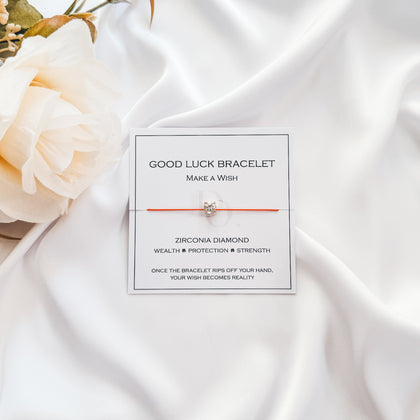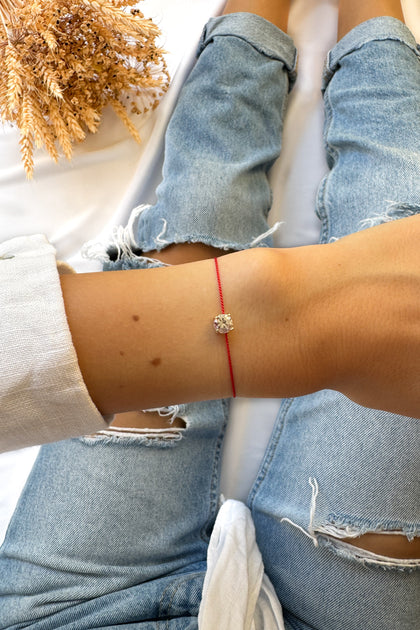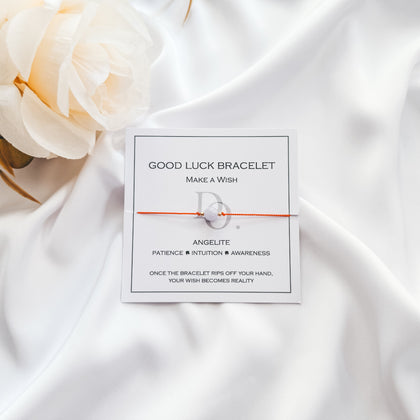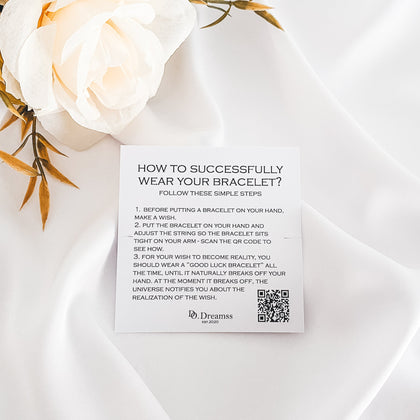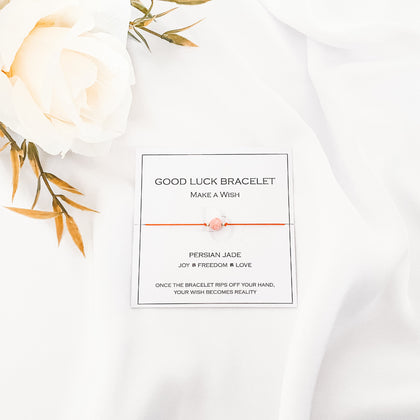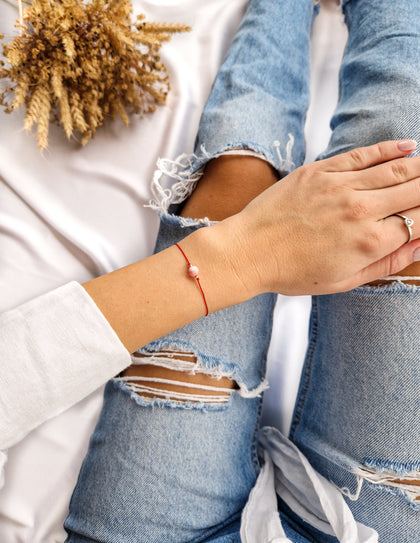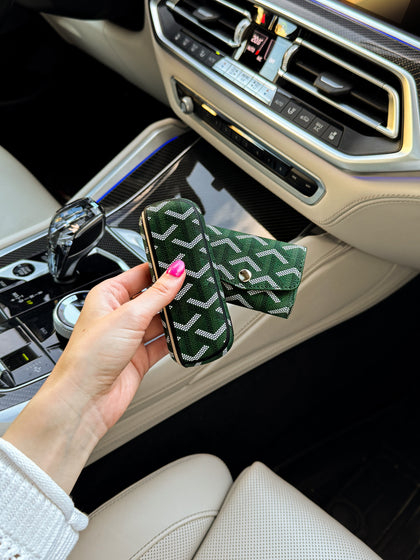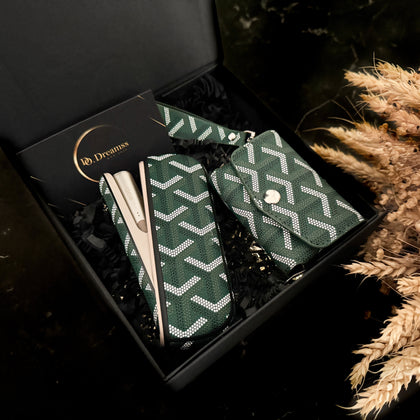The Lucky Edit by Do.Dreamss
Matching Jewelry with Outfits: The Do.Dreamss Guide to Polished Style
The perfect piece of jewelry can transform an ordinary outfit into something extraordinary. Beyond simply accessorizing, thoughtfully matching jewelry with outfits creates a polished, intentional look that radiates confidence and style sophistication. But what does "matching jewelry with outfits" truly entail? It's not merely about coordinating colors or following trends—it's about creating balance, style synergy, and expressing your unique personality through carefully selected pieces. Whether you're dressing for the boardroom, a casual weekend, or a special event, understanding the art of jewelry pairing elevates your entire wardrobe.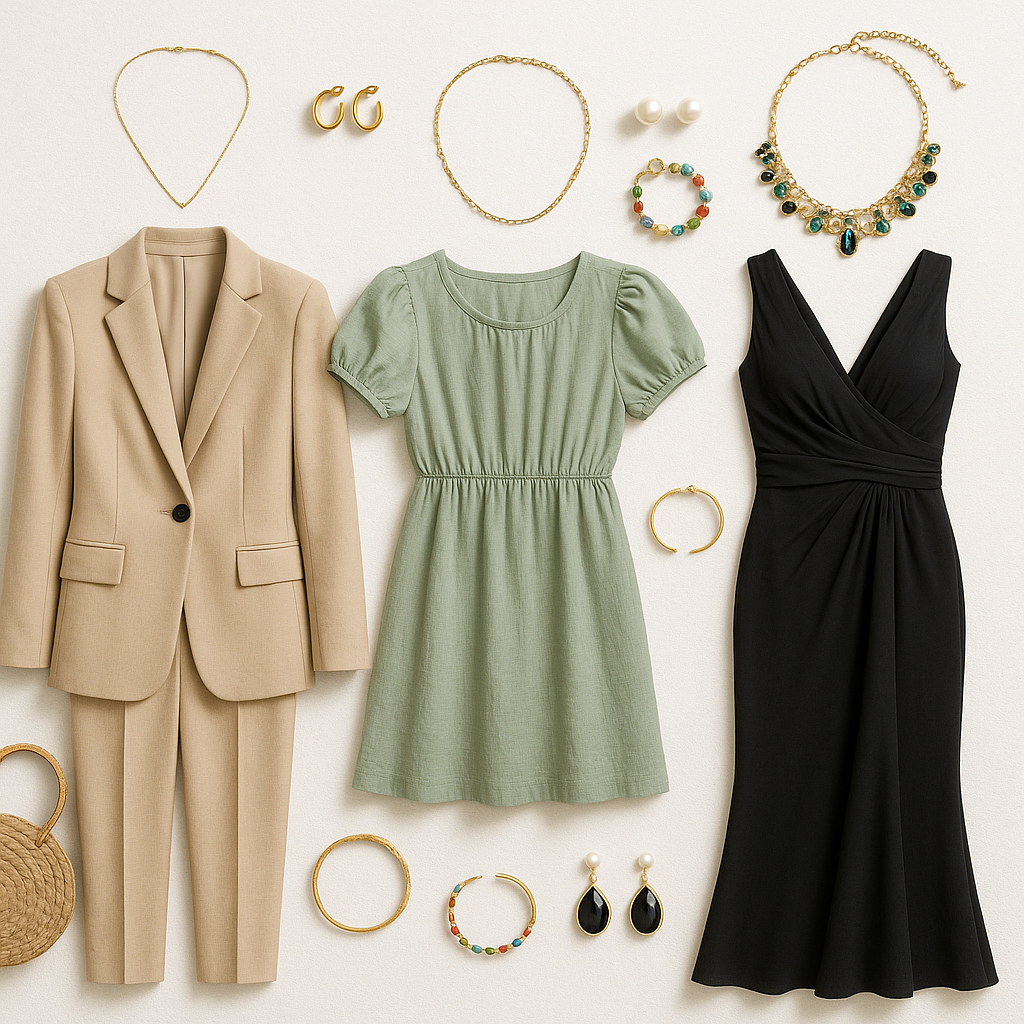
For more style inspiration and tips, check out our blog on chic accessories and everything stylish.
Understanding the foundations of jewelry and outfit pairing
When coordinating accessories with clothing, several fundamental principles determine whether your look feels cohesive or disjointed. The relationship between your jewelry choices and outfit selections isn't arbitrary—it follows aesthetic guidelines that, once understood, make styling decisions much more intuitive.
The occasion, your personal style preferences, body shape, and color theory all influence successful jewelry pairing. For instance, a business meeting might call for subtle, refined pieces that complement rather than distract from professional attire, while a gallery opening allows for more artistic, statement accessories that become conversation starters.
Your individual style personality forms the foundation of accessorizing decisions. Some gravitate toward minimalist, delicate pieces that whisper rather than shout, while others prefer bold statement jewelry that commands attention. When balancing colors in your jewelry collection, consider not just what's trendy, but what genuinely resonates with your aesthetic sensibilities.
Universal accessorizing principles
- consider the overall silhouette—voluminous clothing often pairs best with streamlined jewelry
- match jewelry formality to occasion appropriateness
- use accessories to highlight your favorite features
- think about your entire look as a composition, with jewelry adding focal points
- incorporate personal meaning when possible—jewelry tells your story
The Do.Dreamss approach emphasizes intentional styling that feels authentic rather than prescribed. While fashion rules provide helpful structure, your jewelry selections should ultimately reflect your personality and make you feel confident in your skin.
Matching metals, gemstones, and color palettes
The interplay between metal tones, gemstone colors, and your clothing palette creates the visual harmony that defines polished style. Understanding these relationships helps you make informed choices that enhance your overall appearance.
Metal selection based on outfit colors
Different metals complement distinct color families in clothing. Gold jewelry pops against earth tones and warm neutrals, while silver sets off blues, greens, and pastels beautifully. Rose gold offers versatility, enhancing both warm and cool colors with its romantic blush tone. When selecting pieces for your ensemble, consider these classic pairings:
- yellow gold: burgundy, forest green, chocolate brown, cream, and orange-based reds
- silver/white gold: navy, teal, pure white, black, and cooler purples
- rose gold: blush pink, lavender, sage green, and soft neutrals
For print or patterned clothing, identify the dominant color and select jewelry that complements it, or choose metals that match accent tones within the pattern for subtle coordination.
Gemstones and your skin undertone
Your skin's natural undertone—warm, cool, or neutral—influences which jewelry metals and gemstones appear most flattering against your complexion. Those with warm undertones (yellow or golden hues) typically shine in yellow gold, coral, turquoise, and earth-toned stones.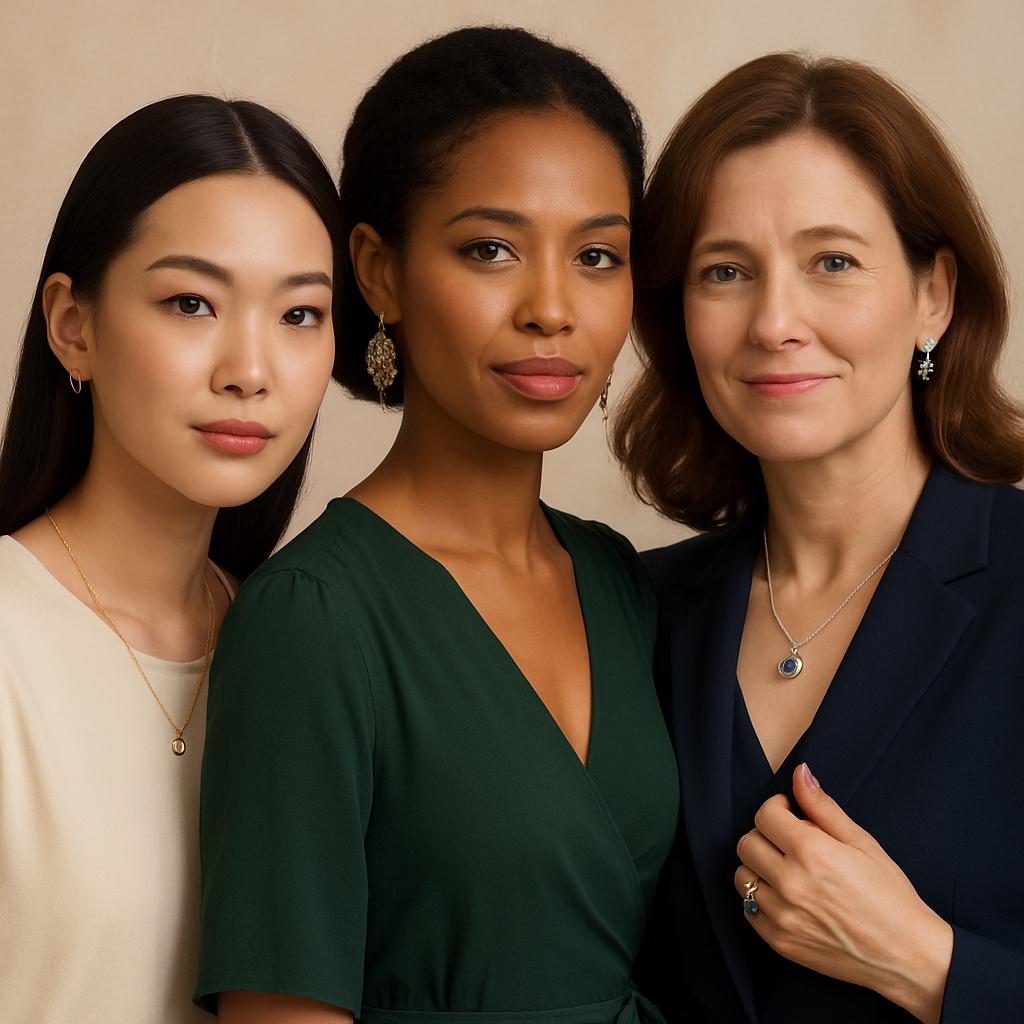
Cool undertones (pink or blue hints) often look stunning with silver, white gold, platinum, and jewel-toned gemstones like sapphire or emerald.
Current trends embrace mixing complementary gemstone colors with clothing, like pairing turquoise accessories with coral clothing for a striking complementary effect. For a more subtle approach, select gemstones in the same color family as your outfit but in slightly different shades for dimension. See our latest Do.Dreamss arrivals for examples of gemstone pieces that pair beautifully with this season's palette.
Color theory in accessorizing
Basic color wheel principles can guide your accessorizing choices:
- complementary colors (opposite on the color wheel) create vibrant contrast
- analogous colors (adjacent on the color wheel) create harmonious coordination
- monochromatic looks (varying shades of one color) create sophisticated depth
For example, a royal blue dress pairs strikingly with amber or topaz jewelry (complementary), elegantly with aquamarine or sapphire (analogous), or sophisticatedly with varying blue-toned stones like lapis lazuli and blue topaz (monochromatic).
Styling for necklines, dress styles, and outfits
The architecture of your clothing—especially necklines—provides the perfect framework for showcasing different jewelry styles.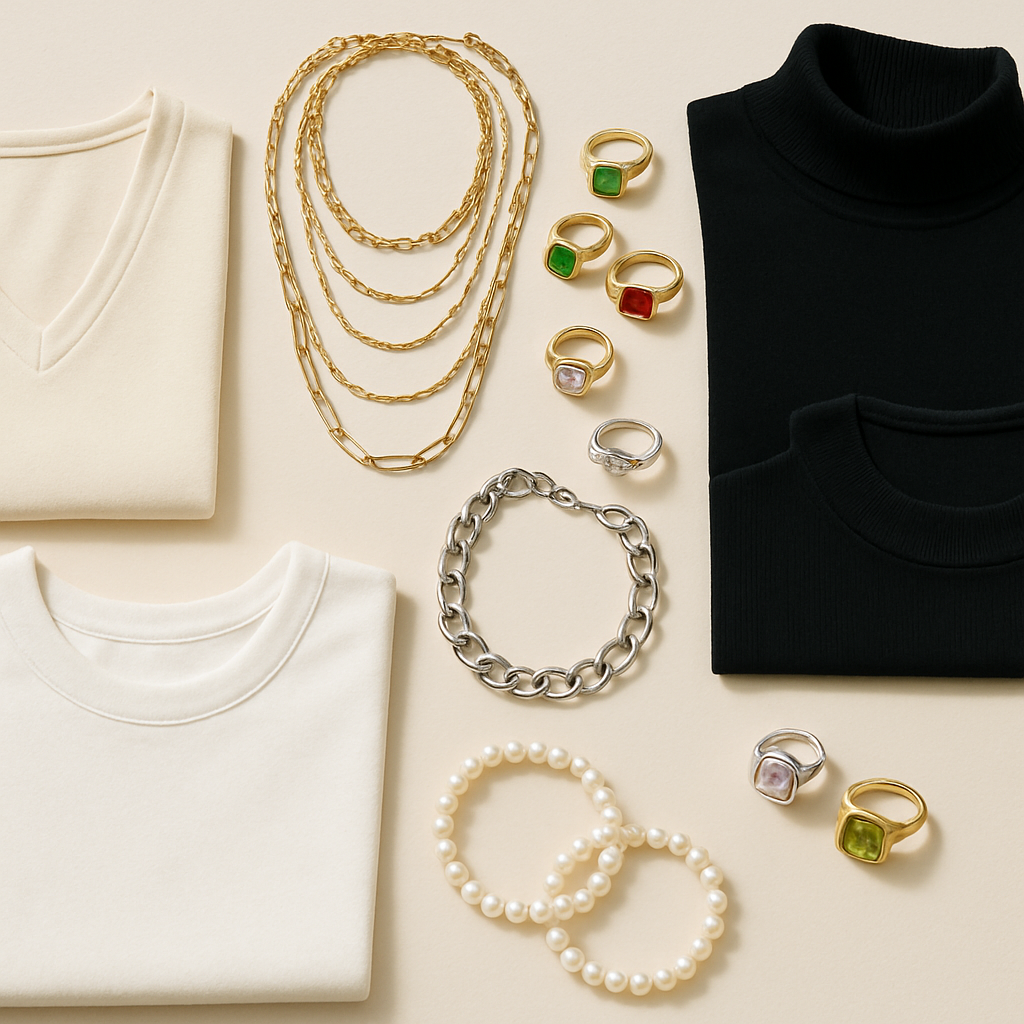
Specific necklines naturally complement certain accessories, creating balance and visual interest.
Matching jewelry with outfits for every neckline
Each neckline has ideal jewelry pairings that enhance rather than compete with its shape:
- V-neck: Pendant necklaces that echo the V-shape or shorter styles that nest within the open space create elongation and elegance. Avoid chokers that cut the line.
- Round/crew neck: Shorter necklaces that sit above the neckline or longer styles that fall well below it prevent visual clutter. Collar necklaces or bibs work beautifully.
- Off-shoulder/boat neck: Statement earrings and updo-friendly styles take center stage, while delicate chains or collar-bone grazing necklaces complement the horizontal line.
- Turtleneck: Long pendants, statement earrings, or bold bracelets balance the coverage. Skip necklaces that compete with the high neckline.
- Strapless/sweetheart: Chokers, collar necklaces, or shorter pendants highlight décolletage. Chandelier earrings add drama for evening events.
- Halter/one-shoulder: Asymmetrical earrings or cuffs echo the design element. Keep necklaces minimal or skip them entirely to avoid competing with the neckline.
Jewelry for formal vs. casual dress
The formality of your outfit dictates appropriate accessory choices. Evening and formal occasions typically welcome more elaborate, light-catching pieces with gemstones or intricate metalwork. For business settings, select refined pieces that communicate professionalism—think pearl studs, sleek watches, and delicate necklaces that complement rather than distract.
Casual environments allow greater experimentation with materials, colors, and proportions. Weekend wear pairs beautifully with layered bracelets, colorful statement earrings, or pendant necklaces featuring natural materials. Explore what's new at Do.Dreamss for inspiration on seasonal casual-chic pairings.
Earrings for different hairstyles
Your hairstyle works in tandem with earrings to frame your face:
- updos showcase dangling styles and intricate backs
- short cuts balance well with statement studs or geometric shapes
- long, loose hair calls for bolder earrings that won't disappear
- half-up styles accommodate both statement and subtle options
When selecting earrings, consider not just your outfit but how your hair will interact with the pieces. A sleek ponytail creates the perfect canvas for shoulder-dusting earrings, while voluminous curls might overwhelm delicate drops.
Balance, layering, and personal expression
The art of jewelry styling extends beyond matching individual pieces to specific outfits—it encompasses creating balance within your overall look and expressing personality through thoughtful combinations and layering techniques.
Balancing statement and subtle jewelry
The most sophisticated accessorizing follows the principle of balanced focal points. When wearing a dramatic statement necklace, keep earrings and bracelets understated. Conversely, bold chandelier earrings pair best with minimal necklaces or no necklace at all. This approach creates visual harmony rather than competition between accessories.
Consider your outfit's details when determining jewelry balance. Heavily embellished or patterned clothing requires more restrained accessories, while minimalist clothing provides the perfect backdrop for more elaborate jewelry expressions.
Jewelry layering tips
Layering has evolved into an accessorizing art form, allowing for personalized combinations that add depth and interest:
- when stacking necklaces, vary lengths with approximately 2-inch differences between layers
- combine different textures—mix chains with pendants, beads, or charms
- maintain cohesion by keeping metals within the same family or intentionally mixing no more than two metal tones
- for bracelet stacking, combine different widths and incorporate one textural element (like a woven piece or beaded design)
- use negative space between pieces to prevent a cluttered appearance
The key to successful layering lies in creating intentional groupings rather than random accumulation. When layering, vary lengths and textures but keep metals similar for cohesion. Odd numbers of pieces (three or five) often create the most visually pleasing arrangements.
Expressing individual style
While styling guidelines provide helpful structure, authentic personal expression remains the ultimate goal of accessorizing.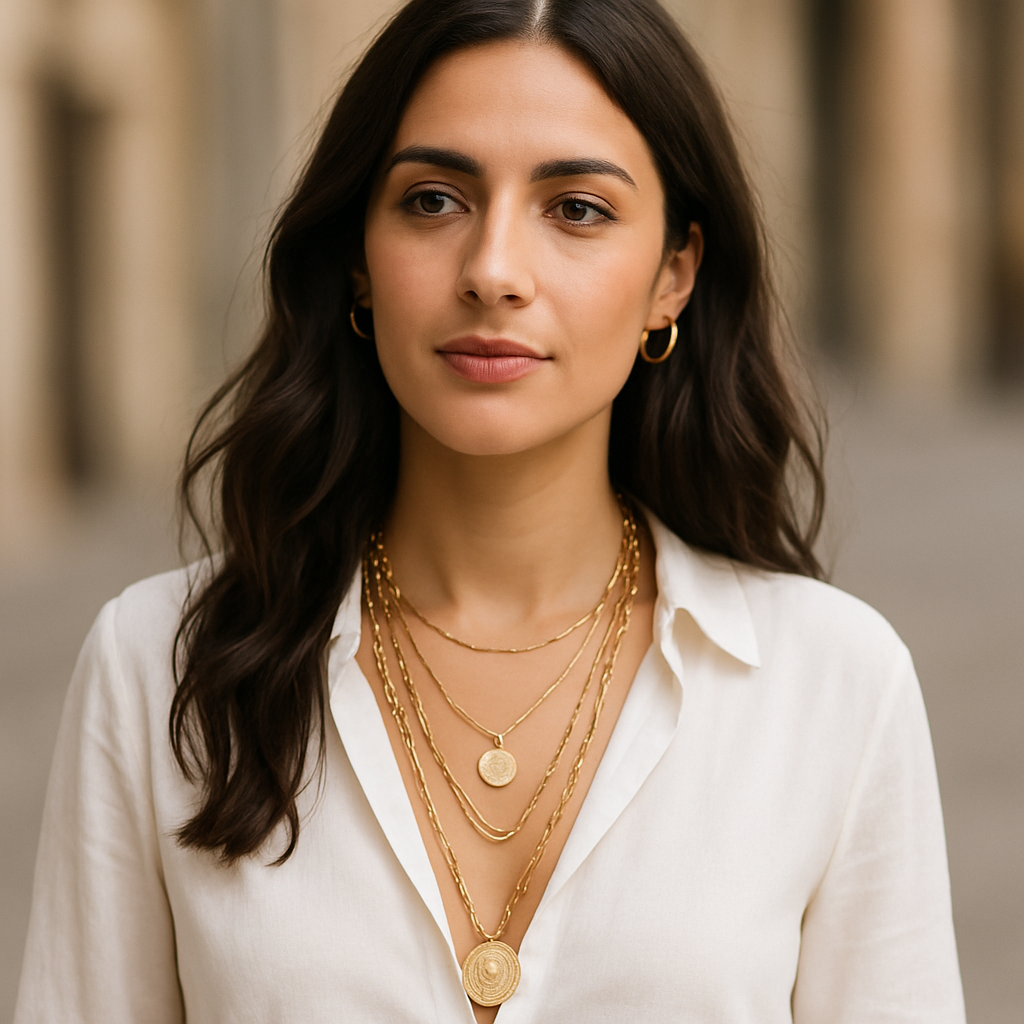
Incorporate meaningful pieces—perhaps family heirlooms, travel souvenirs, or designs that resonate with your aesthetic preferences—alongside trend-driven selections.
Signature jewelry elements can become part of your recognizable style identity. Whether you're known for stacked rings, layered gold necklaces, or colorful statement earrings, cultivating consistency in certain elements while experimenting with others creates a distinctive yet evolving personal style.
Remember that confidence transforms any jewelry choice from merely decorative to genuinely expressive. Shop our versatile layering collection to discover pieces that speak to your unique sensibilities while maintaining the flexibility to work across your wardrobe.
Conclusion
Matching jewelry with outfits transcends simple coordination—it's about creating a harmonious relationship between your accessories and clothing that reflects your personality and enhances your natural features. The most successful pairings balance color harmony, proportion, occasion-appropriateness, and personal expression.
Remember that while guidelines provide structure, genuine style comes from confidence and experimentation. Start with foundational principles—complementary metals for your skin tone, appropriate necklaces for different necklines, balanced focal points—then develop your unique approach through mindful practice and observation.
Your jewelry collection tells your style story, with each piece contributing to the narrative. Whether you prefer minimalist elegance, bohemian layers, or bold statement pieces, thoughtful accessorizing elevates every outfit from ordinary to extraordinary. Let your accessories be the finishing touch that transforms getting dressed into creative self-expression—the ultimate goal of polished, personalized style.
Frequently Asked Questions
How do I pick jewelry that matches my outfit color?
Choose metals and gemstones that either complement or tastefully contrast your outfit's color. Use the color wheel as a guide—warm tones like gold for reds and browns, silver for blues and cooler shades.
What jewelry should I wear with a high-neck or turtleneck top?
Long necklaces or statement earrings work best with high-neck styles to elongate and balance the look.
Is it okay to mix metals (gold, silver, rose gold) in one outfit?
Mixing metals can look chic if done intentionally; stick to a dominant metal and add one accent in small doses for a modern twist.
How do I layer necklaces without looking cluttered?
Vary necklace lengths, keep chains dainty if stacking multiple, and stick to a single color palette for a cohesive look.
What's the best jewelry for a formal event vs. work or everyday wear?
Opt for bolder statement pieces or gemstone accents for formal events; minimalist pendants, studs, and slim bracelets for work and casual outfits.

